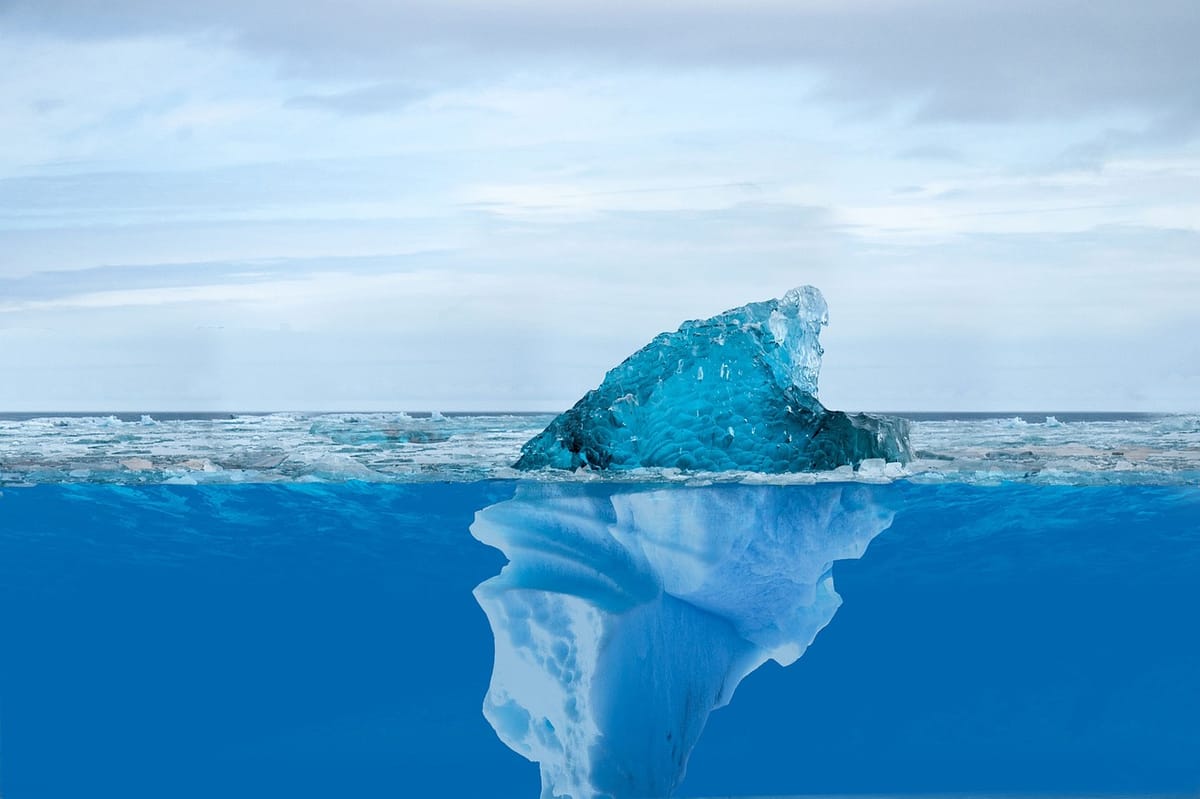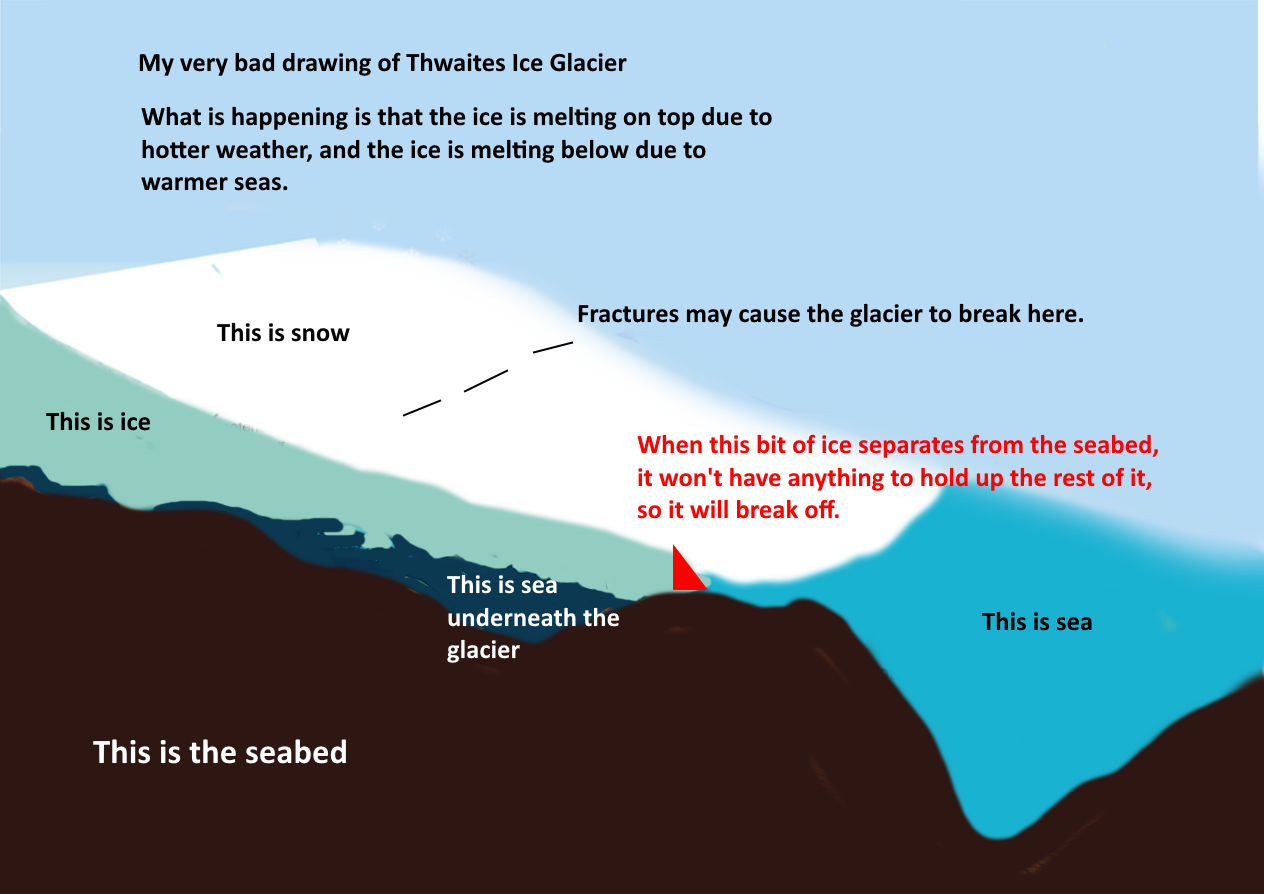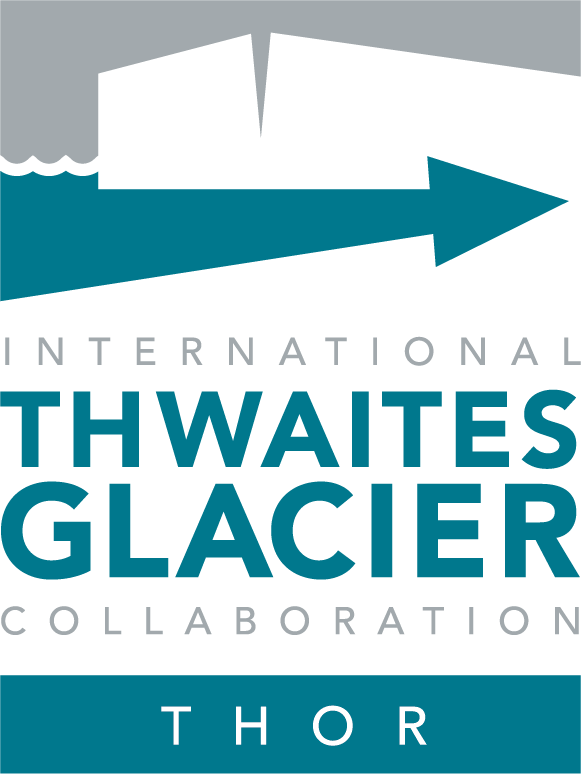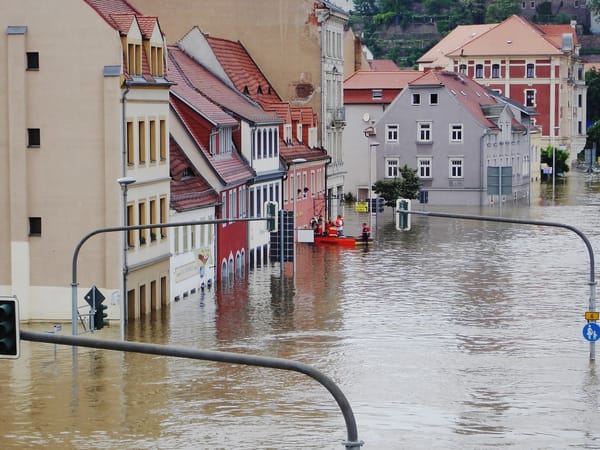Why the Doomsday Glacier is Important, But Maybe Not THAT important.

It's not floating - it's stuck to the seabed, and the ice that holds it to the seabed is melting.
You've probably heard of the Doomsday Glacier, and if you've read about it, there are those scientists who will tell you that the ice at the poles will only be melted by the end of the century while others will give you dates varying between 2030 and 2050 - referring specifically to Thwaites Glacier.
The truth about Thwaites is that we don't know. What we do know is that it's melting much more rapidly than scientists initially anticipated, and when it is finally melted, it will result in a sea rise of about nine feet.
That's because the ice is attached to the seabed below, and if it melts there, there is nothing to prevent the surface part of the glacier from sinking into the sea, and when that happens, it displaces water, and the sea level will rise.

When I first read about this, I thought Thwaites was probably shaped like a mushroom, with a load of ice on top, and just a thin stem of ice holding it up. That's not quite how it looks. I couldn't find a proper schematic without breaking licencing laws, so this is my very bad attempt.

Sea level rise in the cities
Most big cities are next to the coast - Mexico City, New York Los Angeles, London, Cape Town, San Francisco, Venice, Istanbul, Perth, and Dubai, Oslo, Hong Kong, Lisbon, and more. These cities will face a sea rise of up to nine feet, although the sea doesn't rise at the same level for all places.
Depending on how quickly that happens, it could be a few years, or it could be a few months, or it could be a few weeks. It could also be another century. Nobody really knows. There has only been conjecture.
Scientists, speaking at the American Geophysical Union Fall Meeting in New Orleans this month, reported that a critical section of the keystone Antarctic glacier, Thwaites Glacier, will likely collapse in the next five to ten years. The research, led by Erin Pettit of Oregon State University, predicts that the Thwaites ice shelf will break apart within the next decade because of startling increases in surface fractures and rifts. Up until now the floating section at the outlet of Thwaites Glacier into the ocean, called the ice shelf, has been relatively stable, but the scientists say it could “shatter like a car windscreen.” Thwaites Glacier is one the largest Antarctic glaciers, comparable to the size of Great Britain or Florida. Meltwater from Thwaites alone is responsible for 4% of global sea level rise, leading it to receive a great deal of scientific attention in recent years. Researchers have already observed dramatic changes to the glacier, including a doubling of its speed in the past three decades, but scientists are warning the worst is yet to come. Source
Should we worry about the Doomsday Day Glacier?
I think the real question is whether we should worry about sea rise. If one is living along the coast in a rental, one can probably move out without much loss. If we have a home, it would be a loss, especially if insurance companies are no longer willing to foot the loss.
Last week, two insurance firms, Farmers and AAA, said they would no longer sell homeowners insurance in Florida, leaving middle-class homeowners no longer be able to afford to rebuild or insure the homes they’ve occupied for decades on the Florida coast. As climate change pushes the U.S. further into its uninsurable era, insurance firms are abandoning homeowners with payouts below market values in many coastal areas, or by fleeing risky markets altogether. But that doesn’t mean the area will be deserted. Source

Scientists studying Antarctica's vast Thwaites Glacier - nicknamed the Doomsday Glacier - say warm water is seeping into its weak spots, worsening melting caused by rising temperatures, two papers published in Nature journal showed on Wednesday. Thwaites, which is roughly the size of Florida, represents more than half a meter (1.6 feet) of global sea level rise potential, and could destabilize neighboring glaciers that have the potential to cause a further three-meter (9.8-foot) rise. Reuters
So, if we are living on the coast, it might be time to reconsider. As Erin Pettit of Oregon State University, has indicated, it will be gone by 2030. That is seven years away. She could also be wrong.
Whether we should take action or not, would be dependent on where we live. It would also be dependent on the level of sea rise that the melting of the Thwaites Glacier would bring. If it's a few inches, we could probably cope with routine flooding. We could build sea walls to prevent our properties and businesses being damaged. However, we don't really have any definite knowledge at this moment. Scientists are, however, continually investigating, so we do need to keep a close eye on that.
Sea Rise
Apart from a great loss of property, industry, and possible loss of life (and the disappearance of those islands that are sitting on sea level) if we don't move fast enough to prevent catastrophe, humanity can always move inland. There are far greater concerns when it comes to climate change.
The sea is a complex living environment, and the warming of the seas is destroying the balance of life in the sea. Those fish and organisms that need cooler water are moving somewhere else, and those that enjoy warmer water are thriving to an extent that they are causing damage.
As individuals, it is difficult for the human brain to be concerned about the billions of cycles that are either being harmed or destroyed as a result of climate change. All we can do is attempt to fix our own corner of the earth, plus prepare for a time when things may get difficult.
The iceberg, known as A23a, split from the Antarctic’s Filchner Ice Shelf in 1986. But it became stuck to the ocean floor and had remained for many years in the Weddell Sea. Not any more. Recent satellite images (Nov. 2023) reveal that the iceberg, weighing nearly a trillion metric tonnes, is now drifting quickly past the northern tip of the Antarctic Peninsula, aided by strong winds and currents. The iceberg is about three times the size of New York City and more than twice the size of Greater London, measuring about 4,000 sq km (1,500 square miles). Source
My take on the Doomsday Glacier is that I'm living 93' above sea level, that it won't affect me immediately, but fires, floods, droughts, and hurricanes would. I think it's a matter of priorities. We change the things we can, and we accept the things we can't.
I think it's important not be overwhelmed in these times. We should all be trying to eliminate plastics from our lives, making do with less than we are accustomed to, and planning ahead. However, too many worries are not good for us. So now that you know about the Thwaites Glacier, you can be aware of it, but not worry about it too much. 😄




